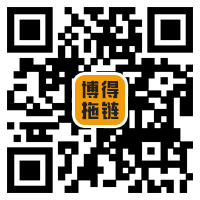Whether the drag chain belt has quality problems
The quality problem of the drag chain belt may lead to deviation accidents. For example, uneven internal tension of the belt causes unbalanced tension on both sides, leading to belt deviation. In fact, as a flexible part, the internal tension of the belt cannot be balanced, and the deviation phenomenon cannot be avoided, but as long as it is controlled within the range, it will not affect the normal operation of the equipment. The drag chain belt of the quayside crane trolley bears the tension through the aluminum alloy plate lining. Compared with the ordinary non-metallic belt, it can ensure the internal tension balance, so it can be determined that the deviation accident is not caused by the quality problem of the drag chain belt itself.

Whether the drag chain belt conveying system is defective
The alignment between the belt traction point and the belt bracket, the straightness of the belt bracket, the height of the belt groove on the belt guide plate, and the reliability of the belt tensioner are all factors that need to be considered to determine the cause of the deviation accident. The neutral difference between the belt traction point and the belt bracket may cause the belt to run off. Since the traction point of the drag chain belt is located at the trolley and the rear auxiliary trolley, the lateral deviation of the trolley and the rear auxiliary trolley during operation may cause misalignment between the belt traction point and the belt bracket. The trolley track of the quayside bridge is a welded track with poor straightness. The trolley is prone to lateral deviation during operation, which is an important reason for the deviation of the drag chain belt. The large straightness deviation of the belt bracket may also lead to deviation of the belt during operation. The installation quality of the quayside bridge is guaranteed, and after strict inspection, the belt deviation is generally not caused by the straightness of the belt bracket. The height of the belt groove on the belt guide plate determines whether the belt is easy to get out of the groove in case of deviation. The height of the belt groove on the belt guide plate of the quayside crane trolley is too small, which is easy to cause the drag chain belt to run off. The reliability of the belt tensioner determines whether the belt can maintain tension when the tension changes. It was found in the inspection that the reliability of the belt tensioner of the quayside crane trolley was not high. Under static conditions, the tension spring should have extended and pulled the belt guide disc backward to keep the belt tensioned, but actually the tension spring is still compressed under static conditions. The vibration generated when the trolley is running (especially when passing the hinge point of the front and rear axles) causes the tractor head to shake, causing the belt to jump and relax instantaneously. The tension on both sides of the belt is unbalanced due to the tension device's failure to tension the belt in time and the belt's slotting under the action of the lateral force transmitted by the traction head, which causes the belt to run more and more sideways under continuous operation, resulting in scraping between the belt and the side plate of the tension bracket. It can be seen that the poor reliability of the belt tensioner is the main reason for the deviation of the drag chain belt.
Solutions
In order to avoid the occurrence of such problems and eliminate the hidden dangers of the equipment, the trolley drag chain system is modified as follows. The trolley power signal communication still adopts the cable transmission mode, and the existing single belt traction type is changed to the dual belt traveling type structure. The cable input fixed end is set at the midpoint of the trolley running on the front girder. Two belts are respectively connected to the fixed end through the spring tensioning device. The two belts are respectively looped back to the fixed end of the trolley through the front and rear drums of the drag chain trolley and fixed firmly. The trolley cable is fixed on the rear belt and runs synchronously with the belt. The drag chain trolley is of rectangular steel structure, with guide drums connected at both ends, and steel rolling wheels installed at both sides, which can reciprocate on the guide rail of the fixed support. Two sets of upper and lower belt guide pulleys are installed on the drag chain trolley every distance, and the guide pulley is connected to the drag chain trolley through a bracket to ensure the vertical support of the belt and the smooth relative operation on the drag chain trolley. Install two sets of separated guide rail brackets on the girder. The guide rail is located at the bracket to ensure that the drag chain trolley can move back and forth in a straight line on the girder.

